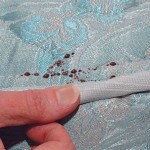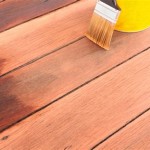How to Recover Outdoor Patio Furniture
Outdoor patio furniture, designed to withstand the elements, inevitably shows signs of wear and tear over time. Prolonged exposure to sun, rain, wind, and fluctuating temperatures can lead to fading, cracking, rust, and general degradation of materials. While replacing damaged furniture is an option, recovering the existing pieces offers a cost-effective and environmentally conscious alternative, extending their lifespan and allowing for customization to suit updated aesthetic preferences.
Recovering patio furniture involves replacing worn or damaged fabric, repairing structural components, and refinishing surfaces to restore the furniture to its original condition or better. The process varies depending on the type of furniture, the materials involved, and the extent of the damage. Careful preparation, the right tools, and appropriate materials are essential for successful recovery.
Before embarking on a recovery project, it is crucial to assess the condition of the furniture thoroughly. Identify specific areas of damage, such as tears in upholstery, rust on metal frames, or cracks in wooden components. This assessment will inform the recovery plan and determine the necessary materials and tools. Consider the original construction of the furniture to anticipate potential challenges during disassembly and reassembly.
Preparing for the Recovery Process
The initial stage of recovering patio furniture involves meticulous preparation. This includes cleaning the furniture thoroughly to remove dirt, debris, and mildew. A solution of mild soap and water is generally sufficient for most surfaces. For stubborn stains, a specialized outdoor cleaner may be necessary. Ensure the furniture is completely dry before proceeding to the next step.
Disassembly is often required to access the areas needing repair or replacement. Carefully remove cushions, fabric covers, and any hardware, such as screws, bolts, or staples. Take detailed photographs or create labeled diagrams of the disassembly process to facilitate reassembly later. Store all hardware in labeled containers to avoid confusion. For woven furniture like wicker or resin wicker, carefully inspect the weave for damage or fraying.
Once disassembled, inspect each component for damage. Wooden frames may have cracks, warps, or rot. Metal frames may exhibit rust or corrosion. Plastic components can become brittle and prone to breaking. Address any structural issues before proceeding with fabric replacement or refinishing. Repairing or replacing structural elements ensures the longevity and stability of the recovered furniture.
For metal furniture, remove any rust using a wire brush or sandpaper. Apply a rust converter or primer to prevent further corrosion. For wooden furniture, repair cracks or splits with wood filler or epoxy. Replace rotted or severely damaged wood sections. Sand the surfaces smooth to create a uniform base for refinishing.
Preparing the work area is another crucial aspect. Choose a well-ventilated space where you can work comfortably. Cover the floor with drop cloths to protect it from spills or debris. Gather all necessary tools and materials before starting the project to streamline the process and minimize interruptions.
Replacing Fabric and Upholstery
Replacing fabric and upholstery is a common aspect of recovering patio furniture. The selection of appropriate fabric is critical for durability and weather resistance. Outdoor fabrics, such as solution-dyed acrylic, polyester, or olefin, are designed to withstand exposure to sunlight, moisture, and mildew. Choose a fabric with a high UV resistance rating to minimize fading.
Accurately measure the existing fabric covers to create patterns for the new upholstery. Add seam allowances to the measurements to ensure a proper fit. If the original covers are intact, they can be used as templates for cutting the new fabric. Carefully trace the patterns onto the new fabric and cut them out using sharp scissors or a rotary cutter.
Sew the fabric pieces together using a heavy-duty sewing machine and outdoor-grade thread. Reinforce seams with multiple rows of stitching for added durability. Consider using a serger to finish the edges of the fabric to prevent fraying. Install zippers, Velcro closures, or ties as needed to secure the covers to the furniture frames.
When replacing cushions, consider the type of foam or filling material. Outdoor cushions typically use closed-cell foam or batting that is resistant to water absorption and mildew growth. Measure the existing cushions to determine the correct size and shape for the new filling material. Wrap the foam or batting in a moisture-resistant fabric or lining before inserting it into the new covers.
Carefully attach the new fabric covers to the furniture frames using staples, tacks, or Velcro. Ensure the fabric is stretched evenly and smoothly to avoid wrinkles or sagging. Pay attention to corners and edges to create a professional and tailored appearance. For woven furniture, carefully re-weave any damaged sections or replace entire panels as needed.
Refinishing Frames and Surfaces
Refinishing the frames and surfaces of patio furniture can significantly enhance its appearance and protect it from further damage. The refinishing process varies depending on the material of the furniture, such as metal, wood, or plastic.
For metal furniture, remove any loose rust or paint with a wire brush or sandpaper. Apply a rust converter to neutralize any remaining rust. Prime the metal surface with a rust-inhibiting primer to create a smooth and durable base for the topcoat. Choose an outdoor-rated paint or powder coating that is resistant to fading, chipping, and corrosion. Apply multiple thin coats of paint, allowing each coat to dry completely before applying the next. Powder coating provides a more durable and long-lasting finish compared to paint.
For wooden furniture, sand the surfaces smooth to remove any old finishes or imperfections. Apply a wood preservative to protect the wood from moisture and insects. Choose an outdoor-rated paint, stain, or varnish that is appropriate for the type of wood. Apply multiple coats of the chosen finish, following the manufacturer's instructions. Consider using a clear coat sealant to protect the finish from UV damage and weathering.
For plastic furniture, clean the surfaces thoroughly with a mild detergent and water. Sand the surfaces lightly to create a better surface for the paint to adhere to. Use a plastic-specific primer to ensure proper adhesion of the paint. Choose an outdoor-rated paint that is designed for use on plastic. Apply multiple thin coats of paint, allowing each coat to dry completely before applying the next. Consider using a clear coat sealant to protect the paint from scratches and fading.
After refinishing, allow the furniture to dry and cure completely before reassembling it. This will ensure the finish is durable and resistant to damage. Inspect all hardware and replace any damaged or missing screws, bolts, or other fasteners. Lubricate moving parts to ensure smooth operation.
Consider adding decorative elements to enhance the appearance of the recovered patio furniture. This could include adding new cushions, throw pillows, or outdoor rugs. Personalize the furniture to reflect individual style and preferences. Properly maintained recovered patio furniture will provide years of enjoyment and enhance the outdoor living space.
Regular cleaning and maintenance are essential for prolonging the lifespan of recovered patio furniture. Clean the furniture regularly with a mild detergent and water to remove dirt and debris. Protect the furniture from prolonged exposure to sunlight and moisture by covering it when not in use. Store the furniture indoors during the off-season to prevent damage from harsh weather conditions. Inspect the furniture regularly for any signs of damage and address any issues promptly.

How To Restore Old Patio Furniture Fast

How To Recover Your Outdoor Cushions For Deck Or Patio Furniture

How To Clean Restore Outdoor Patio Ipe Wood Furniture Teak Master

A Full Diy On How Easy It Is To Re Cover Patio Cushions For Outdoor Living

How To Recover Your Outdoor Cushions Quick Easy Jennifer Maker

Wicker Furniture Repair Guide Jessica Welling Interiors

How To Repair Outdoor Furniture Scratches Green With Decor

How To Recover Your Outdoor Cushions Quick Easy Jennifer Maker

How To Replace Outdoor Sling Chair Fabric With Phifertex Youtube

How To Recover Your Outdoor Cushions For Deck Or Patio Furniture








